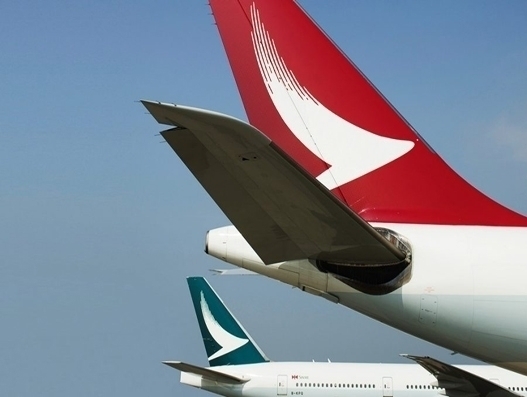
Cathay Pacific cargo volume up in September
Oct 22, 2018: Hong-Kong based Cathay Pacific Group has recently released September traffic figures for Cathay Pacific and Cathay Dragon. The two airlines see 1.0 percent year-on-year decline in passenger traffic due to typhoon Manghkut that hit the city mid-September. On the other hand, the two airlines see increase in cargo and mail volume last […]

Oct 22, 2018: Hong-Kong based Cathay Pacific Group has recently released September traffic figures for Cathay Pacific and Cathay Dragon.
The two airlines see 1.0 percent year-on-year decline in passenger traffic due to typhoon Manghkut that hit the city mid-September.
On the other hand, the two airlines see increase in cargo and mail volume last month compared to September 2017. The two airlines carried 180,623 tonnes of cargo and mail, an increase of 1.7 percent. The cargo and mail load factor rose by 1.1 percentage points to 69.2 percent. Capacity, measured in available freight tonne kilometres (AFTKs), was increased by 0.7 percent while cargo and mail revenue freight tonne kilometres (RFTKs) increased by 2.3 percent.
In the first nine months of 2018, the tonnage rose by 6.4 percent against a 3.0 percent increase in capacity and a 6.1 percent increase in RFTKs.
Ronald Lam, director Commercial and Cargo, Cathay Pacific said: “The significant disruption caused by Typhoon Mangkhut in Hong Kong and Typhoon Jebi in Japan negatively impacted both our passenger and cargo businesses in September, leading to slower capacity and revenue growth than had been anticipated.”
“On the passenger front, the load factor remained stable based on the operated capacity, whereas gross yield only achieved small growth, with the previous favourable currency trend ceasing in September.
“On the cargo front, demand continued to strengthen as we moved into the seasonal peak and we saw both year-on-year load factor and yield improvements during the month. However, we continue to closely monitor external factors that are impacting global trade.”

